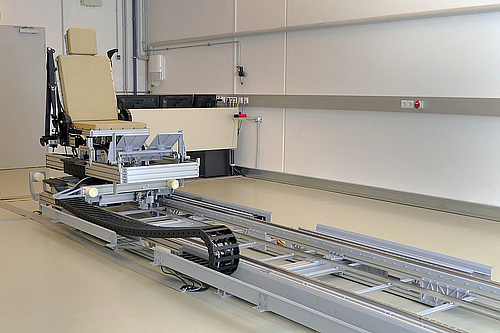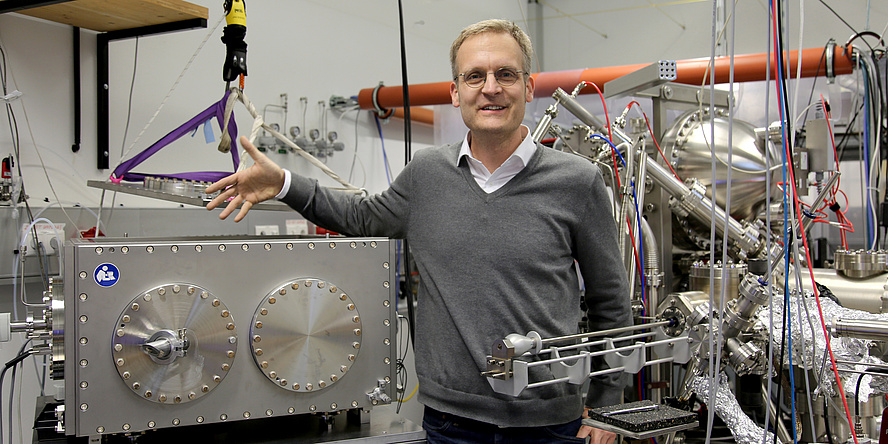In 2022, the second competitive call for research infrastructure and for teaching infrastructure of the TU Graz took place. 10 research facilities are being funded, with the total planned cost of the facilities amounting to just under three million euros. In teaching, 16 projects can look forward to funding totalling more than 750,000 euros; the total value of the new infrastructure is around one million euros. There will probably be another competitive call for teaching infrastructure within the current performance agreement period. The equipment from the second call (that was just concluded) will be purchased in the coming months and can then be requested for your projects at TU Graz or used in teaching.
In these lists for the research infrastructure and the teaching infrastructure you will find all funded projects of the call 2022 and the respective contact persons.
The projects from the first call in 2019 have already been purchased and are in operation at TU Graz – for example at the Institute of Experimental Physics and the Vehicle Safety Institute, where the new infrastructure is used in research and teaching.
Studies in ultra-short time periods
“It is not one big device, but many small parts that interact here,” says Martin Schultze, describing the laser-based resonant extreme-ultraviolet scattering beamline at the Institute of Experimental Physics. The starting point is an infrared laser that begins its journey through a beamline. On the way, the frequency spectrum of the laser pulse is extended. The wider the spectrum, the smaller the periods that can be observed. Through a tube in the wall, the laser pulse reaches the laboratory in the next room, where it lands in a vacuum chamber. Here, electrons are separated from their atom, accelerate and return to their place of origin. The electrons emit the “excess” energy they have taken up along their path in the form of light. The spectrum of the light is now so wide that processes can be studied in the attosecond range. An attosecond is 1×10⁻¹⁸ of a second, i.e. one billionth of a billionth of a second. In these ultra-short time periods, electronic and magnetic phenomena such as electron movements can be studied with the help of the photoemission electron microscope (PEEM) in the same laboratory.
The experiments have met with an international response; Martin Schultze’s team is working together with Harvard University, for example. But there is also a profitable research partnership in the immediate vicinity with the University of Graz as part of NAWI Graz. In addition, students are familiarized with the laser laboratory in courses and, for example, work on theses with existing measurement data.
New test rig: how do people behave before an accident?
Also funded as part of the first call and now in operation at the Vehicle Safety Institute is a test rig developed at TU Graz that can be used to measure the pre-crash behaviour of car occupants. A team led by Corina Klug is conducting research on how acceleration and braking manoeuvres at low speed affect the muscle activity and kinematics of vehicle occupants in different sitting positions.

The experimental set-up involves a platform that is guided on 3.75-metre rails and moved at up to 4.3 m/s by an electric motor. It is accelerated or decelerated with a maximum of 1g, which corresponds to strong emergency braking. On top of this is a seat whose backrest and seat surface can be adjusted as desired. High security standards ensure that the test subjects are well protected. Those who participate in trials are informed in advance about the benefits and risks, and all trial series are also reviewed by an ethics committee. The forces between people and the platform are measured at various points, pressure distribution at the seat, 3D movements with a motion capturing system and muscle activity with a wireless EMG system.
Initial results with the test rig were achieved and published as part of an inter-faculty Master’s thesis together with the Institute of Interactive Systems and Data Science: “Testing of human reactions during braking manoeuvres combining a physical test bed with virtual reality”. The test rig and the surrounding measuring systems have also been used in teaching and have inspired students in laboratory exercises to get involved in vehicle safety. In the process, students have learnt how to measure muscle activity and three-dimensional movements, and at the end – on a voluntary basis – were also able to ride in the test rig themselves.
The ZDF magazine Terra Xpress shows in this video (from about minute 18:40) how the tests at the TU Graz test rig can contribute to better protection for women in car accidents.
Overall, 12 projects were funded in 2019 as part of the first competitive call for research and teaching infrastructure of the TU Graz. In total, the University thus supported acquisitions worth around 2.5 million euros with a funding amount of 1.2 million euros. TU Graz staff can request the devices for their projects in research and teaching. The Research & Technology House is happy to provide more information (contact at the end of the article).

